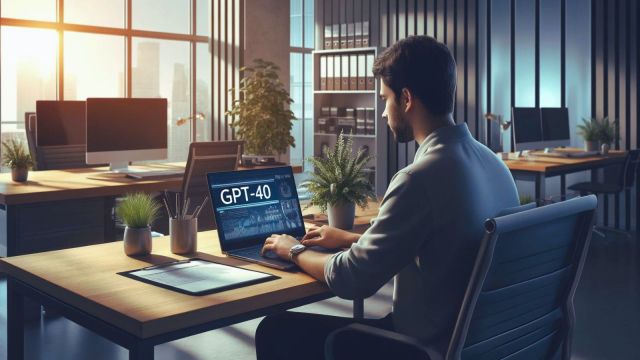
Ever since its launch, those who have access to the new model are taking the Internet by storm with the demos of GPT-4o. It could change the way we interact with AI chatbots. Here is a look at some of the most interesting use cases of GPT-4o as shared by users on X.
From drawings to working websites
Story continues below this ad
Based on this post by Alvaro Cintas, an AI enthusiast, GPT-4o can analyse sketches, identify design components and create responsive layouts leading to fully-functional websites.
GPT-4o is very much capable of transforming drawings into working websites. It does this by interpreting visual elements and later translating them into CSS, HTML, and JavaScript codes. GPT-4o here streamlines the entire web development process, essentially reducing the need for someone to manually code. With this example, it can be said that GPT-4o can help accelerate project timelines.
Transform pictures on the go
Podcaster Tyler Stalman shared a post on his X account showing how he transformed a picture clicked using his iPhone into a Japanese-style illustration with GPT-4o.
The all-new GPT-4o is a great way to transform your photos into an assortment of styles. The post above shows how GPT-4o is using advanced AI to analyse and interpret images with specific visual styles. This facet of the new model allows users to instantly create unique and stylised artworks from their regular photos.
Instant motivation
Another X user, Dane Cook, uses ChatGPT powered by GPT-4o to gather some motivation. This is a perfect example of how an AI-powered assistant can help you as a personal assistant in your day-to-day activities. Cook is seen asking the chatbot to give some words of encouragement regarding some projects that he needs to accomplish during the day, and GPT-4o responds giving him hope and motivation.
The post demonstrates how GPT-4o works as a personal motivator by offering tailored words of encouragement and support to the user. This personalised interaction is likely to help users boost their productivity at work. It needs to be noted that this voice feature is yet to be rolled out for all.
Advanced data analysis
At the work front, another big use case that could redefine the way we work with data is GPT-4o’s ability to interpret complex data sets and identify patterns. It could generate and execute queries to come out with specific insights from spreadsheets. This could lead to automating some repetitive tasks such as data filtering, sorting, and summarising.
Story continues below this ad
Ethan Mollick, a professor at The Wharton School, shared a post on X showcasing how GPT-4o is a big leap in data analysis.
GPT-4o is capable of offering explanations from statistical results with the help of data visualisations. It can suggest optimisations for data structure and formulas, and even create graphs and charts based on a user’s inputs.
Animating Charts and Graphs
A user by the name Ayami_marketing, in her post on X, showed how GPT-4o is capable of animating charts and graphs. This is a remarkable feature that adds a certain dynamism to data interpretation. The user said that she created a graph using a PDF and later visualised it using GIF.
This aspect of GPT-4o certainly makes complex data more accessible and easier to understand for anyone. The animations in graphs make for an effective way of engaging with data.
Realtime assistance
Perhaps, this is the most useful of GPT-4o’s capabilities. The AI model uses its vision capabilities to help users identify surrounding environments and interact with the chatbot to learn more. This feature could particularly benefit those who rely on accessibility features like those with visual impairments.
The real-time vision capabilities, as demonstrated by OpenAI, is a gamechanger as they are able to describe a whole lot of things around them, helping users identify objects and environments. This feature could offer vital accessibility support through detailed, contextual descriptions.
It needs to be noted that these capabilities can only be tested on a ChatGPT Plus account as of now. These features will be made available to all in the following weeks.









